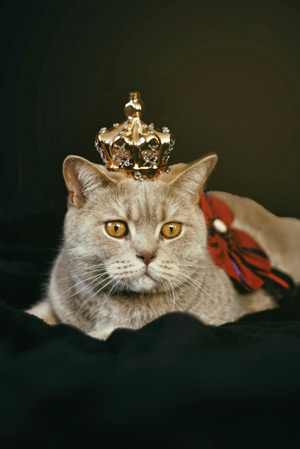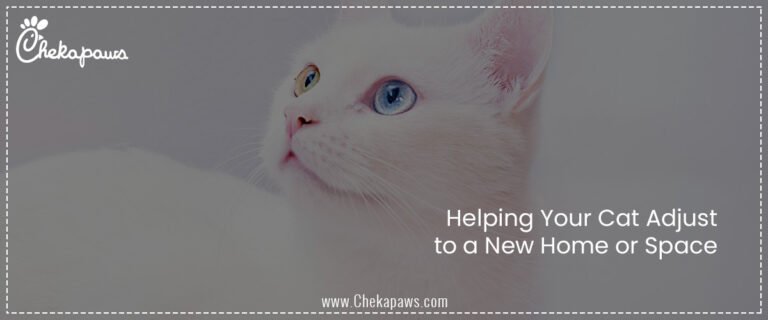As a pet owner, I am aware that cats have captivated people for ages. Cats have a special role in our lives; they were worshipped in ancient Egypt, are loved as pets in contemporary homes, and are the subject of scientific research. However, beneath their charm and fun is a more profound reality: cats have extraordinary healing abilities. Their presence has the potential to greatly enhance human well-being, whether it is psychological, emotional, or physical. We’ll examine the many facets of cats’ therapeutic potential in this extensive book, including its scientific, emotional, spiritual, and other uses.
Table of Contents

Introduction: The Mysterious Bond Between Humans and Cats
Humans and cats have a special bond that is deeply meaningful despite frequently being less obviously dependant than that of dogs. Because cats are selective about when to express affection, their relationship might feel more spiritual than transactional. In the company of their feline companion, many cat owners report experiencing a sense of serenity, connection, or even transcendence.
Cats provide nonjudgmental companionship, in contrast to human partnerships. They don’t give a damn about your appearance or day. They simply are—a calming, silent presence that is consoling and reassuring. But does their presence offer more than anecdotal solace? Of course.
A Look Back: The Historical Role of Cats in Healing
It has long been believed that cats are spiritual and healing creatures. They were revered in ancient Egypt and connected to the goddess Bastet, who stood for fertility, healing, and protection. It was a serious offence to kill a cat.
The beckoning cat, or “Maneki-neko,” is said to bring health and good fortune in Japanese folklore. Cats were also regarded as guards of the spirit realm, carriers of mystical wisdom, and protectors of the house and hearth in Celtic and Norse mythology.
Cats were kept in hospitals as early as the beginning of medicine to alleviate tension and stop rat infestations, unintentionally fusing emotional and physical recovery. Their historical presence in homes and healing centers is not accidental; rather, it is therapeutic and instinctive.
Science Behind the Purr: Vibrations That Heal
It has long been believed that cats are spiritual and healing creatures. They were revered in ancient Egypt and connected to the goddess Bastet, who stood for fertility, healing, and protection. It was a serious offence harm cats.
- Improve bone density and promote healing
- Reduce pain and inflammation
- Lower blood pressure
- Promote muscle and tendon repair
This phenomenon, known as “purr therapy,” has inspired research into using similar frequencies in physiotherapy and rehabilitation. When your cat curls up on your lap and starts purring, they may be doing more than expressing contentment — they could be healing your body from within.
Cats and Mental Health: Emotional Comfort and Stress Relief
Animals, particularly cats, have demonstrated significant effects on emotional well-being, and mental health issues are becoming more prevalent worldwide. Cats can lessen the signs of
- Anxiety
- Depression
- Post-Traumatic Stress Disorder (PTSD)
- Panic disorders
Here’s how
- Structure and regularity: Taking care of a cat, feeding it, and grooming it establishes a daily routine that benefits those who are depressed or anxious.
- Nonverbal empathy: When a cat senses sorrow, they frequently comfort their people by purring or snuggling up next to them.
- Presence over performance: Cats don’t need to exert any emotional energy, in contrast to people. The mere presence of them can alleviate emotional fatigue.
According to a 2019 study that was published in Frontiers in Psychology, just touching a cat for a few minutes dramatically lowered cortisol levels, a stress hormone.
Cats as Therapy Animals: More Than Just Companions
Even while dogs are the most common therapy animals, cats are becoming more and more popular as approved therapy pets, particularly in settings like
- Nursing homes
- Mental health centers
- Hospitals
- Schools for special needs children
Calm, understanding, and tolerant are traits of therapy cats. They have been connected to
- Improved social engagement and mood in individuals with dementia
- Children with autism have improved verbal and nonverbal communication skills.
- Decreased agitation in chronic disease patients
Therapy cats are now certified by organizations like Pet Partners and Love on a Leash, which recognizes their therapeutic value in both clinical and community contexts.
Healing Through Touch: Petting and Oxytocin
One of the most basic human needs is touch, and simply caressing a cat can have a number of therapeutic benefits
- Releases oxytocin: referred to as the “love hormone,” oxytocin fosters emotional attachment and lowers stress.
- Lowers blood pressure and heart rate: Caressing a cat’s fur helps lower blood pressure and heart rate.
- Endorphins are natural pain relievers that elevate mood and reduce discomfort.
This touch has a positive effect on cats as well, starting a healing cycle. Every encounter you have with your kitty companion therefore turns into a little therapeutic exercise for you both.
Cats and Sleep: How Felines Promote Restorative Rest
Health is based on sleep, and many cat owners say that sharing a bed with their feline improves their quality of sleep. Cats encourage sound sleep by
- Providing a sense of security
- Purring, which produces soothing vibrations
- Encouraging a calming bedtime routine
Older or more experienced cats frequently snuggle up at your feet or next to your pillow, emanating warmth and tranquilly that helps people fall — and stay — asleep, even though they may not always maintain ideal sleep cycles (especially at night!).
Social Healing: Cats and the Lonely
As harmful to one’s health as smoking or being overweight is loneliness. Particularly for people who live alone, are elderly, or are socially isolated, cats are vital social companions.
Advantages include
- Better conversational skills: Speaking to cats encourages verbal expressiveness, even if it is one-sided.
- Enhanced empathy: Taking care of another person develops emotional intelligence.
- Social catalyst: Having a cat frequently sparks online or in-person discussions with other cat enthusiasts.
Particularly during periods of loss, change, or illness, the unconditional company of a cat improves emotional resilience and lessens feelings of loneliness.
Spiritual and Energetic Healing: Cats in Mysticism
Due to many spiritual traditions, cats have the ability to either absorb or deflect negative energy. They are believed to
- Identify any changes in energy or spiritual problems.
- Keep dwellings safe from evil forces.
- Meditate with people to improve intuition and mindfulness.
Cats are regarded as vivacious protectors in Feng Shui. Cats are said to be sensitive to delicate vibrations and capable of sitting on or close to a person’s energetic blocks to assist in their release in Reiki and other energy healing treatments.
It is indisputable that having a cat about during prayer, meditation, or silent introspection has a calming, meditative impact, regardless of one’s belief in mysticism.
Case Studies and Real-Life Stories
Sarah and Luna: Sarah fell into a deep despair following the terrible death of her spouse in an accident. She had a reason to get out of bed, eat, and eventually smile again thanks to her rescue cat Luna.
The Hospice’s Thomas Cat: Thomas was known to lie next to people who were nearing the end of their lives at a care centre. His presence helped the patients and their bereaved families feel at ease.
Milo and Autism Therapy: A 10-year-old child with autism benefits from therapy cat Milo’s ability to control his emotions and engage more confidently in social situations at school.
Such stories are not uncommon. Around the world, they reverberate in thousands of homes and communities.
Children and Cats: Building Emotional Intelligence
- Children that grow up with cats learn valuable emotional skills:
- Empathy is cultivated by being aware of a cat’s needs.
- Accountability is developed via feeding and maintaining a pet.
- Self-regulation: Emotional control is developed through gentle cat handling.
Cats can offer sensory comfort, emotional regulation, and a pathway to improved focus and communication for kids with autism or ADHD.
Cats and the Elderly: Companionship in the Golden Years
Elderly people frequently experience loneliness, diminished mobility, and the psychological effects of ageing. Their quality of life is improved by the low-maintenance companionship that cats offer
- Reduces loneliness and depression
- Encourages gentle physical activity
- Gives a renewed sense of purpose
Nowadays, a lot of assisted living facilities permit their patients to own cats or frequently bring in therapy animals. Better mood, increased cognitive function, and general vitality are all signs of their influence.
Cat Care as Self-Care
Taking care of a cat is a kind of self-care that goes beyond simple tasks like feeding and cleaning. Play, meals, and grooming routines encourage
- Discipline and routine
- A caring attitude
- Grounding oneself emotionally
You unintentionally give to yourself when you give to your cat. Every meow, head nudge, and silent look serves as a reminder of our connection and need on one another.
Rescue Cats and Mutual Healing
A two-way therapeutic link is frequently formed after rescuing a cat. Numerous adopted felines have experienced neglect, trauma, or abandonment. Their people also heal as they do.
- Taking care of another survivor can be a source of comfort for those who have experienced abuse or loss.
- The journey of a human is reflected in the development of a timid cat into a loving friend.
These connections frequently feel fated or karmic—healing for both parties.
Conclusion
A cat is more than just a pet. They are spiritual mentors, intuitive friends, and silent healers. A cat has the ability to calm your soul and mend your heart, regardless of whether you’re mourning, stressed, lonely, or just looking for serenity.
Even if they don’t follow orders or fetch sticks, they provide something deeper: presence. Cats serve as a gentle reminder to calm down, take a deep breath, and enjoy the simple act of existing in a noisy world.
Therefore, remember that your cat’s purring, rubbing against your leg, or curling up close to you is more than just affection; it’s medication in its most natural and pure form.







